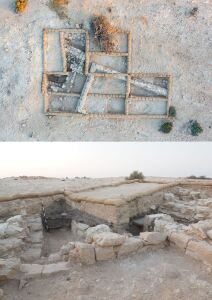Ben-Gurion University of the Negev, Ber-Sheva, Israel
#E-mail: yanatchk@gmail.com
Keywords: desert, Late Antiquity, Byzantine-Islamic transition, field research, Negev
The article discusses a new project for the archaeological study of ancient Nessana, a small settlement of the Byzantine and early Islamic period (5th–7th centuries AD), located in Southern Israel, in the southwestern part of the Negev desert. The heyday of the settlement is connected with its location: in the Byzantine period, Nessana became an important caravan junction on the way of the Christian pilgrimage from the Holy Land to Sinai, to the monastery of St. Catherine. Using all the economic benefits of pilgrimage, Nessana was turning into a large urbanized settlement with a population of about five thousand people, with numerous churches and caravanserais. Pilgrimage undoubtedly played an important role in the life of the settlement, which is clearly reflected in the evidence of papyri of the 5th–7th centuries AD found there in the 1930s. The favorable location of the site on the very edge of the desert, many churches, papyri, building inscriptions and pilgrimage graffiti in several languages, as well as an arid climate conducive to the preservation of organic materials, make Nessana a unique object for studying the archaeological problems of the early Christian pilgrimage. Despite intensive work carried out in Nessana by two archaeological expeditions, the stratigraphy of the site and its layout are still unclear. The article presents the preliminary results of the first season of fieldwork of the new Nessana expedition and considers a number of issues related to the further study of the site.
DOI: 10.31857/S0869606323020058, EDN: RFICRC








